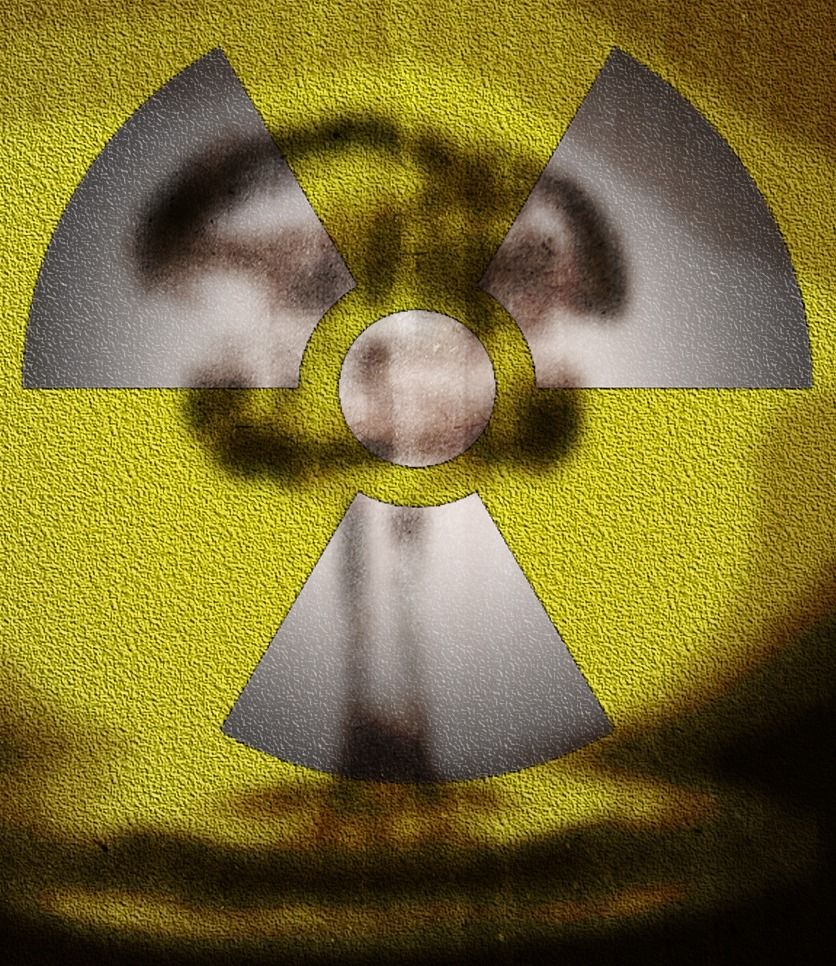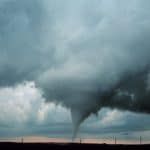What is US nuclear policy, exactly?
By Adam Mount, Abigail Stowe-Thurston | April 18, 2018

The US Nuclear Posture Reviews (NPR) are the nation’s primary statements of nuclear weapons policy, and each has been debated closely. However, the 2018 NPR is unusual in that it has been subject not only to debate about the rectitude of its policies, but also about what those policies actually are. Even as press accounts claim that the review provides for significant, even alarming changes to US policy, four notable experts, writing in Real Clear Defense, recently assured us that the document is “clearly in the mainstream of U.S. nuclear policy.” These widely divergent accounts are not merely a function of incomplete information or expertise, but also due to the fact that statements by the NPR authors and other senior defense officials reveal inconsistencies on several subjects—including the circumstances in which the US would consider using nuclear weapons, the capability of existing forces, and the necessity and mission of two proposed nuclear options.
As Greg Weaver, the deputy director for strategic plans and policy of the US Joint Chiefs of Staff, wrote on Twitter, “[US government] policy is what the NPR states. There is always someone who says otherwise.” (Weaver, a key contributor to the NPR, deleted his Twitter account, but Hans M. Kristensen of the Federation of the American Scientists archived many of his tweets.)
The 2018 NPR release was rough by historical standards. On January 11, a “pre-decisional” draft was leaked to the media, which meant that initial analysis took place before Defense Department officials could hold briefings and comment to clarify their intent. Immediately after the substantially-amended review was formally released on February 2, the Defense Department had to withdraw it from the website to correct a chart that mistakenly showed China and Russia respectively holding Taiwanese and Japanese territory. (The Defense Department had previously fixed the part of the chart that showed North Korea as having control over the entire Korean peninsula). Glenn Kessler, who writes The Fact Checker column for the Washington Post, called another chart, which appeared in the final version of the report, “tortured” and “highly misleading,” and warned that “from such flimsy statistics bad policies may be born.” While it is regrettable that a draft was leaked, allies and adversaries will read it for clues to understanding the language in the final version.
Matters were complicated by an unusual drafting process. Stakeholders from the State and Energy Departments and the National Nuclear Security Administration made contributions, but media reports suggest an opaque authorship structure. The American Conservative reported that Keith Payne, president of the National Institute of Public Policy, helped write the document, having consulted with other former government officials including Franklin Miller, Robert Joseph, and Richard Mies. University of Antwerp political scientist Tom Sauer, writing in Defense News, called Payne and Miller the “ghostwriters” of the current NPR, along with Brad Roberts and John Harvey. The role of these six reported contributors has not been formally acknowledged or described, which has sometimes made it difficult to tell who is giving a privileged or official accounting of the contents of the document. Given contradictory reports about what the review contains and what its contents mean, allies and adversaries alike may scrutinize these officials’ pre- and post-release comments to discern the intent behind the NPR. Moreover, domestic and foreign audiences will interpret the NPR in light of US President Donald Trump’s comments, which have implied that the United States is seeking nuclear superiority over potential adversaries, and which may in some cases conflict with the text of the review.
Clarity about US nuclear policy is required to ensure healthy democratic oversight and debate, and is also important for assuring allies, maximizing deterrence leverage, and avoiding misunderstandings about US intentions.
Continuity or change? Since it was released in early February, senior defense officials have given several briefings on the review’s content. Their overarching message has been that the 2018 NPR is a mainstream document. For example, Undersecretary of Defense for Policy John Rood said at the initial briefing that the new review represented “a lot of continuity,” and that “declaratory policy . . . is constant with that of the past.” There has been a consistent effort to emphasize elements of continuity and portray changes as modest and evolutionary, or, as in the case of declaratory policy, to obscure them.
To an extent, it is accurate to say that the review exhibits a measure of continuity with past policy: Despite dramatic shifts in the tone of the document, proposed additions to force structure add significant new options but are not in themselves transformational. The section on declaratory policy—describing the circumstances under which Washington would use nuclear weapons—copies a paragraph verbatim from the 2010 NPR. Much of the new language reflects arguments from previous deterrence debates, including some that took place during the Cold War.
Yet official statements have often overstated the degree of continuity. The 2018 NPR is remarkably forward about distinguishing itself from the 2010 NPR, an unusual decision for a major Pentagon policy document. The review’s essential argument is that new threats require shifts in US policy. Despite the repeated paragraph, the document does, in fact, make changes to declaratory policy. It also calls for two additions to US nuclear force structure—a low-yield warhead option for the existing Trident II D5 sea-launched ballistic missile (SLBM) and a new sea-launched cruise missile (SLCM)—that it says are necessary to meet new threats.
Moreover, there remain serious questions about the administration’s commitment to basic tenets of US nuclear weapons policy. For example, does the administration accept mutual vulnerability with Russia? Does it understand strategic stability as a product of a strategic relationship—one the United States could threaten with its actions—or simply as the ability to deter adversaries? If the United States seeks superiority over other nuclear powers, as the president has suggested, it could influence the answers to those questions and could potentially represent a revolutionary shift in US nuclear policy.
A survey of the statements of senior officials and associated authors of the NPR reveal significant inconsistencies on central elements of US policy—including on the definition of non-nuclear strategic attacks, the capability of existing forces, and the necessity and mission of the newly proposed systems.
Declaratory policy. In public remarks, contributors to the NPR have emphasized continuity with Obama administration declaratory policy. For example, at the initial February 2nd briefing, Undersecretary Rood highlighted one section of the 2018 NPR’s policy, saying, “we would employ nuclear weapons only in extreme circumstances, to defend the vital interests of the United States, allies and partners.” He continued, “Those words that I just spoke are the same as that appeared in the 2010 Nuclear Posture Review released by President Obama’s administration. So, in that sense, there is no difference in the declaratory policy.”
This answer elides language that was added to the 2018 text explaining that the United States might classify non-nuclear strategic attacks, including non-nuclear attacks on the United States or allied nuclear forces, or their command-and-control or warning systems, as “extreme circumstances.” The exact meaning of “non-nuclear strategic attack” is not well-defined in the NPR.
Rood subsequently characterized this addition as a “clarification, [which] does not expand the circumstances for nuclear use, nor lower the nuclear threshold.” Yet the 2018 NPR text suggests that the administration added two additional circumstances in which the United States would consider using nuclear weapons: major cyberattacks on the United States, and non-nuclear attacks against US nuclear command-and-control systems.
The question of whether the United States would respond to a major cyberattack with nuclear weapons has been the subject of considerable concern and debate. In January, days after the draft NPR was leaked, the New York Times cited three anonymous current and former senior government officials confirming that a large cyberattack against the United States could elicit a nuclear response.
The leaked draft of the review stated, “…the President will have an expanding range of limited and graduated options to credibly deter Russian nuclear and non-nuclear strategic attacks, which could now include attacks against U.S. [Nuclear Command, Control, and Communications], in space and cyber space.” Following significant public concern, this sentence was revised and the clause “in space and cyber space” stricken from the final version of the NPR released in February. Nevertheless, the fact that it was included in the leaked draft indicates that the authors initially intended the category of “non-nuclear strategic attacks” to include a scenario in which the United States would retaliate against a major cyberattack.
Though the published document does not explicitly include cyberattacks as an example of “extreme circumstances,” it does not explicitly exclude the possibility of a nuclear response to a cyberattack. Furthermore, the NPR includes cyber in a list of “non-nuclear strategic threats” that nuclear forces must hedge against. The final draft of the 2018 NPR also omits language from the 2010 NPR that says “the role of U.S. nuclear weapons in deterring non-nuclear attacks—conventional, biological, or chemical—has declined significantly.” This omission loosens the standing definition of applicable “non-nuclear attacks.”
Contradictory public remarks from government officials have only clouded public perception of what US policy actually is. Speaking to reporters after the leaked draft but before the official 2018 version was released, Vice Chairman of the Joint Chiefs of Staff Gen. Paul Selva insisted “we never said cyber” and said reports to the contrary were “just fundamentally untrue.” Similarly, Deputy Assistant Secretary of Defense Robert Soofer discussed the definition of “non-nuclear strategic attack:” “It could be catastrophic attacks against civilian populations, against infrastructure. It could be an attack using a non-nuclear weapon against our nuclear command-and-control [or] early-warning satellites. But we don’t talk about cyber.” Weaver, the Joint Chiefs of Staff deputy director who deleted his Twitter account, argued that the declaratory policy included in the NPR “is NOT a radical change” from past policy. At the release of the report, however, Rood declined to disavow use of nuclear weapons in the case of a “cyber-physical attack on US infrastructure,” a scenario not specifically addressed in either the leaked draft or the final text, saying it would depend on the “context of an attack.”
Perhaps predictably, inconsistencies have led to divergent narratives in the press. For example, on the same day, Defense One published an article titled “No, the US Won’t Respond to A Cyber Attack with Nukes,” while Fifth Domain published, “Yes, a cyberattack could spur the president to launch a nuclear attack.” Though two defense officials cited in the second piece “argued that the language in the document does nothing to change the stance laid out by the Obama NPR in 2010,” one of them explicitly confirmed that a cyberattack could cause a nuclear response.
Is there a gap? Officials and contributors to the NPR have also given contrasting assessments about whether existing US nuclear forces are sufficiently capable, credible, and flexible to deter limited nuclear use.
The NPR text says that Russia holds a “mistaken belief” that limited first use could be advantageous, but that “correcting this mistaken Russian perception is a strategic imperative.” If the Russian perception is mistaken, that suggests there is no gap in US forces that Russia could exploit to avoid retaliation. Yet the NPR scrambles to fill a gap that it implies does not exist, arguing: “expanding flexible US options now, to include low-yield options, is important for the preservation of credible deterrence against regional aggression.” If the Russian perception of a gap in US forces is mistaken, why does credible deterrence require expanding US options?
In his first public remarks on the NPR, STRATCOM commander Gen. John Hyten commented that “as we evaluated our nuclear posture in light of the threats we face, we found that it is strong today. We have everything we need to address the threats of today. But it is potentially lacking in the future.” He expressed concern that “if we do not act now,” a gap may open. However, one month later, Miller, one of the reported contributors to the NPR, said at a conference in Washington that “there is a gap that we recognize.” Weaver, writing on Twitter, portrayed the low-yield SLBM as a “near term, relatively inexpensive answer to the need to penetrate advanced air defenses until we acquire” the next generation of systems. He also wrote, “I don’t know how you can say our current posture is sufficient” without a proposal for how to “respond to limited Russian first use.” Soofer has argued that the “program of record is not sufficient.” Several of the reported participants in the NPR process have spoken publicly about the insufficiency of current force structure, including in an April 2017 document that refers repeatedly but elliptically to gaps, shares language with the NPR about Russian perceptions of an “exploitable gap,” and proposes both of the supplemental capabilities that appear in the NPR.
Matters are complicated by the fact that many of these officials had in the recent past made statements asserting that the US arsenal was sufficient. Less than a year prior to the 2018 NPR release, General Hyten said, “I’m very comfortable with the flexibility of our response options…we now have conventional responses all the way up to the nuclear responses.” In 2009, Weaver argued that US forces must “be sufficiently diverse and operationally flexible to provide the president with the necessary range of options for their use…Our forces have these attributes today.” But this year on Twitter he said, “US perception of threat posed by [non-strategic nuclear weapons] imbalance changed as a result” of Russia’s behavior in Georgia and Ukraine and its violation of arms control obligations. For more than two decades, there has been asymmetry in the number and type of US and Russian non-strategic nuclear forces; it is only in the last few years that we have seen widespread arguments that this gap is threatening.
It is not clear how the strategic balance has changed in the last months and years to open a gap in US response options. Russia’s pattern of aggression against neighbors has escalated since its invasion of Georgia in 2008, and its officials have continued to make irresponsible statements with respect to its nuclear doctrine and nuclear coercion against NATO allies—but the material balance of strategic forces has not changed drastically. While it is certainly true that the United States must adjust more rapidly to confront hostile Russian actions, it is not clear why US nuclear force structure would be suddenly insufficient. In short, the administration has offered contradictory claims about whether a gap exists and, if so, why.
Deciphering proposals for new missiles. Explanations of the military missions of the low-yield sea-launched ballistic missile and the low-yield sea-launched cruise missile have also varied widely. One area of inconsistency is whether these proposed supplements are “new.” Rood argued that they “would not be a new addition or a new type, and it does not involve production of new nuclear weapons.” Harvey, one of the former officials who apparently contributed to the NPR process, has said publicly that the proposed low-yield option for the Trident II D5 is “certainly not” a new warhead and “not even a new military capability” because Pershing II intermediate-range missiles, eliminated in the late-1980s, had a lower-yield warhead. However, the proposed systems do not exist in the arsenal today, and have been justified as necessary steps to confront a new threat.
Administration officials have still not provided a complete and authoritative explanation of the types of targets that these missiles can threaten that existing options cannot. Yet there have been a handful of statements about the mission and purpose of these systems. Last year, Harvey suggested that a low-yield ballistic missile warhead would enable the “United States to place at risk, once located, mobile command posts highly valued by enemy leaders.” According to Deputy Undersecretary of Defense for Policy David Trachtenberg, the proposed low-yield systems are “intended not to engage or fight, or not even suggest that [a war] could be fought in a way that is limited.” Defense Secretary Jim Mattis also suggested that the yield of a weapon cannot help to control nuclear escalation when he told Congress that “I don’t think there is any such thing as a ‘tactical nuclear weapon.’ Any nuclear weapons used any time is a strategic game-changer.”
At the same time, officials and the NPR text justify both new missile systems as necessary options for controlling escalation in limited-use scenarios. Hyten also said, “If we do have to respond we want to respond in kind and not further escalate the conflict out of control.” Weaver similarly stated (in another now-deleted tweet) that the characteristics of the low-yield SLBM would make it more difficult for Russia to counter than existing low-yield options, and therefore more credible that the United States would respond “in-kind” to a Russian attack. Though the NPR states that it “is not intended to enable, nor does it enable, ‘nuclear war-fighting,’” this kind of limited nuclear exchange for military advantage is what that term is typically understood to signify.
On the other hand, Miller has suggested that “The choice of the modified Trident II warheads clearly indicates that the United States would…strike back against targets of significance to the Russian leadership.” If this is true, the system is not intended to respond to Russian strikes in kind in a limited theater contingency but rather to expand US options for striking Russian targets, especially urban targets deep in the Russian homeland. Russian strategic missile forces are not armed with low-yield warheads.
Without a clear and consistent description of the characteristics of the low-yield Trident’s target set, the administration presents an unclear justification to Congressional authorizers and a confusing picture to allies about how the United States thinks about nuclear use in their neighborhoods. It also undermines the deterrent leverage of the current system.
With regards to the low-yield SLCM, the Nuclear Posture Review simultaneously asserts that the system will provide a “non-strategic regional presence” that will reassure US allies (especially in Asia), and that the United States “may reconsider the pursuit of a SLCM” if “Russia returns to compliance with its arms control obligations.” Defending the SLCM proposal, Mattis also argued it is important that “…our negotiators have something to negotiate with” when they approach Russia about its INF violation. Hyten said both that, “we believe that to respond to a number of threats both in Russia and China we should have a SLCM capability,” and that, “Secretary Mattis was right, it’s hard for our negotiators to negotiate if they don’t have anything to talk about.” If this new capability is critical for US deterrence and assurance relationships around the world, is it really on the table for negotiations with Russia?
Lowering the nuclear threshold? Contradicting the claims of arms control groups,
administration officials and their supporters have consistently argued that “There is no lowering of the nuclear threshold in this Nuclear Posture Review,” but rather that it “seeks to raise the nuclear threshold by reducing the potential for adversary miscalculation.”
However, this claim runs contrary to the accepted definition of what it means to lower the nuclear threshold: either expanding the conditions in which the United States would consider using nuclear weapons, or developing nuclear capabilities that are suitable for lower yields or warfighting purposes. Actions that increase the credibility of “nonstrategic” nuclear weapons also serve to lower the nuclear threshold: to be credible, an adversary must perceive these systems as usable at low levels of escalation. Proponents and opponents of the NPR don’t disagree that it seeks more credible limited options in an attempt to prevent Russian limited use; it is simply that proponents decline to use the term “lowering the nuclear threshold” and are attempting to redefine it. If the 2018 NPR really did raise the threshold for nuclear use, it would decrease the array of circumstances in which the United States would consider using nuclear weapons and withdraw “nonstrategic” forces—in short, the opposite approach.
There also seems to be a disconnect in the fact that the NPR advocates for new low-yield nuclear weapons to provide additional options, while criticizing Russia for taking the same approach. The NPR says Russia believes “that limited nuclear first use, potentially including low-yield weapons, can provide such an advantage [against the United States and its allies]” in part due to “Moscow’s perception that its greater number and variety of non-strategic nuclear systems provide a coercive advantage in crises and at lower levels of conflict.” It goes on to argue that “Recent Russian statements on this evolving nuclear weapons doctrine appear to lower the threshold for Moscow’s first use of nuclear weapons.” How can it be that new Russian low-yield nuclear weapons lower the nuclear threshold, while new US low-yield nuclear weapons raise it?
In nuclear weapons policy, under the right circumstances, ambiguity can be good, accruing benefits while avoiding costs. For example, an ambiguous nuclear threat could deter without committing a country to a nuclear response.
Yet ambiguity can have costs. As Robert Einhorn, a senior fellow at the Brookings Institution, has argued, “ambiguity can be confusing, and it could lead some US adversaries to jump to the wrong conclusion that the US really is prepared to initiate nuclear war early in a conventional conflict.” Ambiguity can also confuse or alarm allies looking for clear assurance signals, or even decrease the effectiveness of tacit or explicit nuclear threats (if an adversary assumed that the threat was already on the table). Alternatively, an adversary may doubt an ambiguous threat precisely because it has not been made explicit.
Contradictory statements are not the same as deliberate ambiguity and can have even higher costs. If officials disagree, disavow stated policy, or otherwise contradict accepted understandings of official policy, it can erase the benefits of that policy and incur costs. The Trump administration has had difficulty with consistency and contradiction, especially in its policy toward North Korea. That confusion increased both the importance and the difficulty of promulgating a clear and coherent nuclear policy.
Though the initial months of the NPR rollout have been uneven, the administration can still develop a clear and consistent description of its nuclear policy—and should.
The first step is to elucidate who wrote and contributed to the NPR, who is entitled to give privileged or official descriptions of its content, and who is not. It may be that the administration does not consider some of the above quotes to be privileged or official—yet allies and adversaries may conclude that they are based on public reporting. Nobody has an interest in either of these audiences drawing mistaken conclusions about nuclear policy.
The second step is to develop clear, complete, and authoritative explanations for policy initiatives in the NPR, especially on declaratory policy and the case for the proposed additions to the US arsenal. Explanations should be immediately and directly communicated to US allies.
Third, we must recognize that the NPR will be read in the context of the president’s public statements. Even if the NPR does not depart from past nuclear policy, allies, adversaries, and the American public will be alert for signs that the United States seeks nuclear superiority, embraces an arms race, or is uncomfortable with mutual vulnerability with Russia. The 2018 NPR does little to assuage these concerns and in many cases validates them (though your understanding will likely depend on whose account you are reading). The administration should be applauded for its public outreach. But work remains to be done to hone the message.
Together, we make the world safer.
The Bulletin elevates expert voices above the noise. But as an independent nonprofit organization, our operations depend on the support of readers like you. Help us continue to deliver quality journalism that holds leaders accountable. Your support of our work at any level is important. In return, we promise our coverage will be understandable, influential, vigilant, solution-oriented, and fair-minded. Together we can make a difference.
Topics: Columnists
















